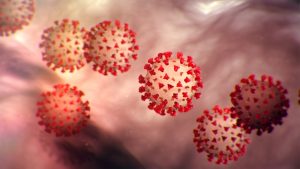Without doubt, times are tough. The seemingly inexorable spread of the COVID-19 pandemic has left many of us desperate for good news. And make no mistake, there is some out there. First, it’s heartening to see the  increased appreciation for those in the public health sector, and also for the unsung heroes of the war against COVID-19: grocery store personnel, garbage collectors, truckers, janitors, pharmacy clerks, postal workers, package deliverers, and others who we now realize are truly essential to a functioning modern society. Let me add one more group of people to that list: utility workers who keep our power on, our access to the internet active, and our clean water flowing. For example, to ensure a reliable water supply, some water treatment professionals are “sheltering in place” at a water treatment facility for the next three weeks. Others, right here in Wisconsin, are working twelve hour shifts in complete isolation to ensure that critical machinery remains operational.
increased appreciation for those in the public health sector, and also for the unsung heroes of the war against COVID-19: grocery store personnel, garbage collectors, truckers, janitors, pharmacy clerks, postal workers, package deliverers, and others who we now realize are truly essential to a functioning modern society. Let me add one more group of people to that list: utility workers who keep our power on, our access to the internet active, and our clean water flowing. For example, to ensure a reliable water supply, some water treatment professionals are “sheltering in place” at a water treatment facility for the next three weeks. Others, right here in Wisconsin, are working twelve hour shifts in complete isolation to ensure that critical machinery remains operational.
That leads me to my second bit of good news: according to the Environmental Protection Agency (EPA) and the Centers for Disease Control (CDC), our water supply is not threatened by COVID-19. Like most viruses, it is “particularly susceptible to disinfection,” a standard process at wastewater treatment plants. It seems appropriate to be grateful for this, given that Sunday was World Water Day. Imagine how terrible this crisis would become if we could not trust our drinking water.
 Earlier this week, Marquette University announced that remote learning will be extended until May 10. As of yesterday morning, and for the next 30 days, Wisconsin residents are subject to the State’s Safer at Home order.
Earlier this week, Marquette University announced that remote learning will be extended until May 10. As of yesterday morning, and for the next 30 days, Wisconsin residents are subject to the State’s Safer at Home order.

